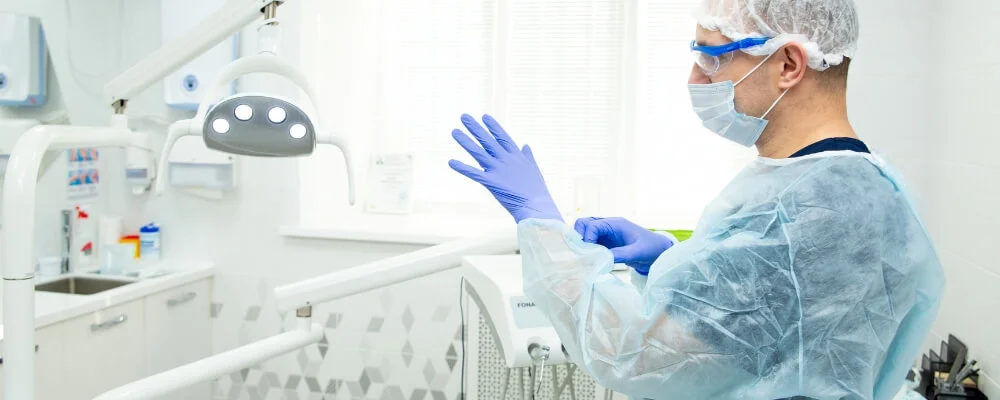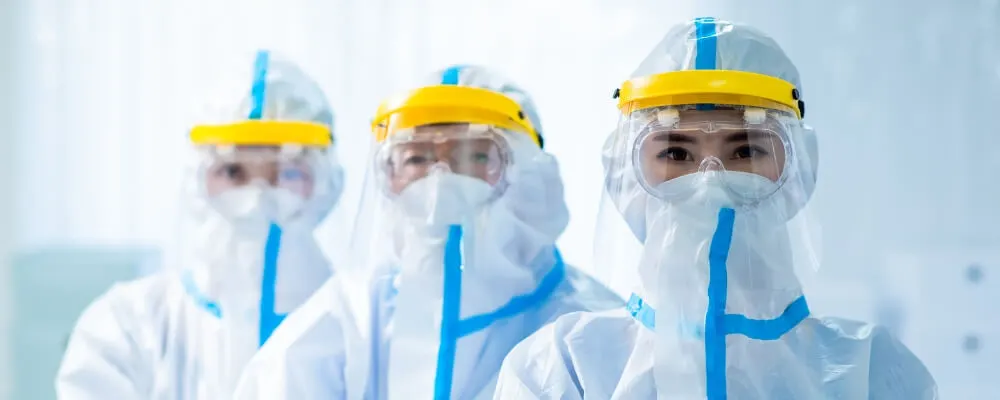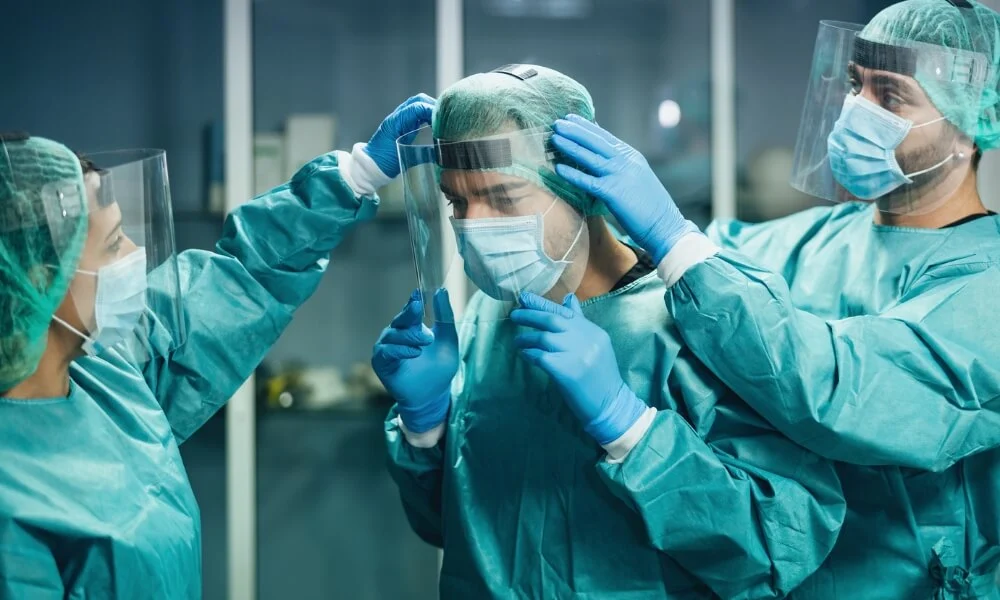PPE Donning and Doffing is a crucial procedure that plays a vital role in ensuring safety and hygiene in various professional settings. From healthcare workers to industrial professionals, mastering the art of putting on and taking off Personal Protective Equipment (PPE) properly can mean the difference between complete protection and potential exposure to harmful contaminants.
This comprehensive guide will walk you through the essential steps that constitute these procedures. Understanding this sequence is not just a matter of individual safety; it’s a commitment to the well-being of those around you and the broader community. Whether you’re an experienced practitioner or a newcomer eager to learn, join us in exploring these indispensable techniques that form the core of occupational safety across numerous fields.
What is PPE Donning and Doffing?
PPE is specialized clothing or equipment worn by an individual for protection against infectious materials. It is a critical tool in preventing the spread of infections in various settings such as healthcare, industrial, and laboratory environments. The process of putting on (donning) and taking off (doffing) PPE is essential to its effectiveness and consists of specific sequences and methods.
Donning (Putting on PPE)
Donning is the process of putting on PPE in a specific sequence to ensure maximum protection. This involves putting on hand hygiene products, shoe covers, gowns, respiratory protection, eye protection, and gloves. The proper method and order of donning prevent contamination of the PPE and the wearer. Each piece of equipment must be put on correctly to provide a barrier against potential contaminants.
Doffing (Taking off PPE)
Doffing is the procedure of carefully removing PPE to prevent contamination of the wearer or the environment. The steps for doffing include removing shoe covers, gowns, gloves, hand hygiene, eye protection, and respiratory protection, and a final hand hygiene step. The order and method are designed to minimize the risk of exposure to infectious materials that may have been collected on the PPE.

Proper Sequence For PPE Donning and Doffing
Personal Protective Equipment (PPE) is essential in many fields to protect workers from exposure to various hazards. Correctly donning (putting on) and doffing (taking off) PPE is vital to ensuring the effectiveness of the equipment. Incorrect usage can lead to exposure to contaminants or other dangers. Here is a general guide for donning and doffing PPE, though specific procedures may vary depending on the equipment and context:
Donning PPE (Putting on)
You’re preparing to enter a potentially contaminated area when putting on PPE. Here’s what you should do:
1. Perform Hand Hygiene
This initial step is crucial to eliminate any germs on your hands before handling clean and sterile equipment. You should wash your hands with soap and water for at least 20 seconds or use a hand sanitizer with at least 60% alcohol, making sure to clean all parts of the hands, including between fingers and under the nails. This action is performed first to ensure the rest of the equipment remains uncontaminated.
2. Put on Shoe Covers (if needed)
Shoe covers are worn to protect your shoes from contaminants on the floor and to prevent tracking those contaminants into clean areas. You should slide the shoe covers over your shoes, ensuring they are secured and not causing tripping or slipping. This is typically done after hand hygiene but before wearing the gown or other body-covering PPE.
3. Put on a Gown
The gown provides a barrier that protects your skin and clothing from contamination by fluids, splashes, or infectious materials. You’ll need to select the appropriate size and type of gown and tie it at the back of the neck and waist to secure it, making sure it covers the necessary areas. The gown is usually put on after shoe covers but before facial protection.
4. Put on Mask or Respirator (if needed)
Masks and respirators protect against inhaling airborne pathogens, dust, or chemicals. You should place a mask over the nose and mouth, secure it with ties or ear loops, and adjust the fit to your face. You might need to perform a seal check for a respirator (such as an N95) to ensure it fits properly. Generally, this is done after the gown is donned, ensuring that the mask or respirator is properly positioned and fits snugly.
5. Put on Eye Protection (if needed)
Eye protection, such as goggles or a face shield, protects the eyes from splashes, sprays, or droplets containing infectious materials. You should position the goggles or face shield over the eyes (and face if using a face shield), adjusting as needed for comfort, ensuring there is a snug fit over or around the eyes to prevent entry of contaminants. This is usually done after placing the mask or respirator so it fits securely over or around them.
6. Put on Gloves
Gloves are the final barrier against contamination, protecting the hands from exposure to contaminants and preventing the spread of infection. You must choose the correct size and carefully pull them over the hands to cover the wrists, being cautious not to tear them. If wearing a gown, the gloves should cover the cuffs of the gown. After all other PPE is in place, this is the final step in the donning process.
By adhering to these guidelines, those required to use PPE, such as healthcare workers, can ensure maximum protection against potential contaminants.

Doffing PPE (Taking off)
Doffing is the process of carefully removing PPE to avoid contamination. Follow these steps:
1. Remove Shoe Covers (if needed)
If shoe covers have been worn, carefully removing them is essential to prevent the spreading of contaminants to other areas. This process must be done in a way that doesn’t allow contaminants to touch the skin or other clothing. The covers should be disposed of in an appropriate receptacle and may be followed by immediate hand hygiene depending on the specific protocol.
2. Remove Gown and Gloves Together
The combined removal of the gown and gloves helps minimize the risk of contaminating your hands. The procedure is done by only touching the uncontaminated inner surfaces of the gown. Gloves are removed inside-out as the hands are withdrawn from the gown’s sleeves. This method ensures that you contain the contaminated parts within themselves and dispose of them in an appropriate disposal receptacle. It’s a process that requires careful practice to master but is crucial for maintaining cleanliness.
3. Perform Hand Hygiene
After removing the gown and gloves, washing or sanitizing your hands is essential to remove potential contaminants. Similar to the initial hand hygiene before donning PPE, it involves thoroughly cleaning with soap and water or hand sanitizer. It’s a step that underscores the importance of maintaining clean hands throughout the PPE handling process.
4. Remove Eye Protection (if needed)
Careful removal of goggles or face shields is necessary to avoid touching potentially contaminated surfaces with bare hands. Eye protection should be handled by the parts that rest against the head or ears and then disposed of or cleaned for reuse according to the manufacturer’s instructions or institutional policy.
5. Remove the Mask or Respirator (if needed)
Removing respiratory protection involves taking off your mask or respirator without touching the front of it, as this part might have collected airborne contaminants. Like eye protection, handling should be done from the straps, followed by proper disposal or cleaning for reuse. This step is done with care to avoid contamination resulting from improper removal.
6. Perform Hand Hygiene Again
Final cleaning of your hands ensures that any potential remaining contaminants are removed. This step reiterates the importance of clean hands and leaves you safe after handling potentially infectious materials. It is the closing step to a process that must be done with precision and mindfulness.
The doffing process is as vital as the donning process, as improper removal of PPE can lead to self-contamination or the spread of contaminants to others or the environment. Adherence to the correct sequence and detailed attention to each step, coupled with appropriate training, helps ensure that the person using the PPE remains protected even after exiting a contaminated environment.
Conclusion
PPE Donning and Doffing are more than mere tasks; they are essential rituals that preserve health and safety across various professions. In this blog, we’ve provided a comprehensive and easy-to-follow pathway to mastering these essential skills. In a world where attention to detail can save lives and prevent the spread of infections, learning the correct sequence for handling Personal Protective Equipment (PPE) is not just professional due diligence; it’s a social responsibility. May this guide be valuable for those committed to excellence, safety, and care in their respective fields.

